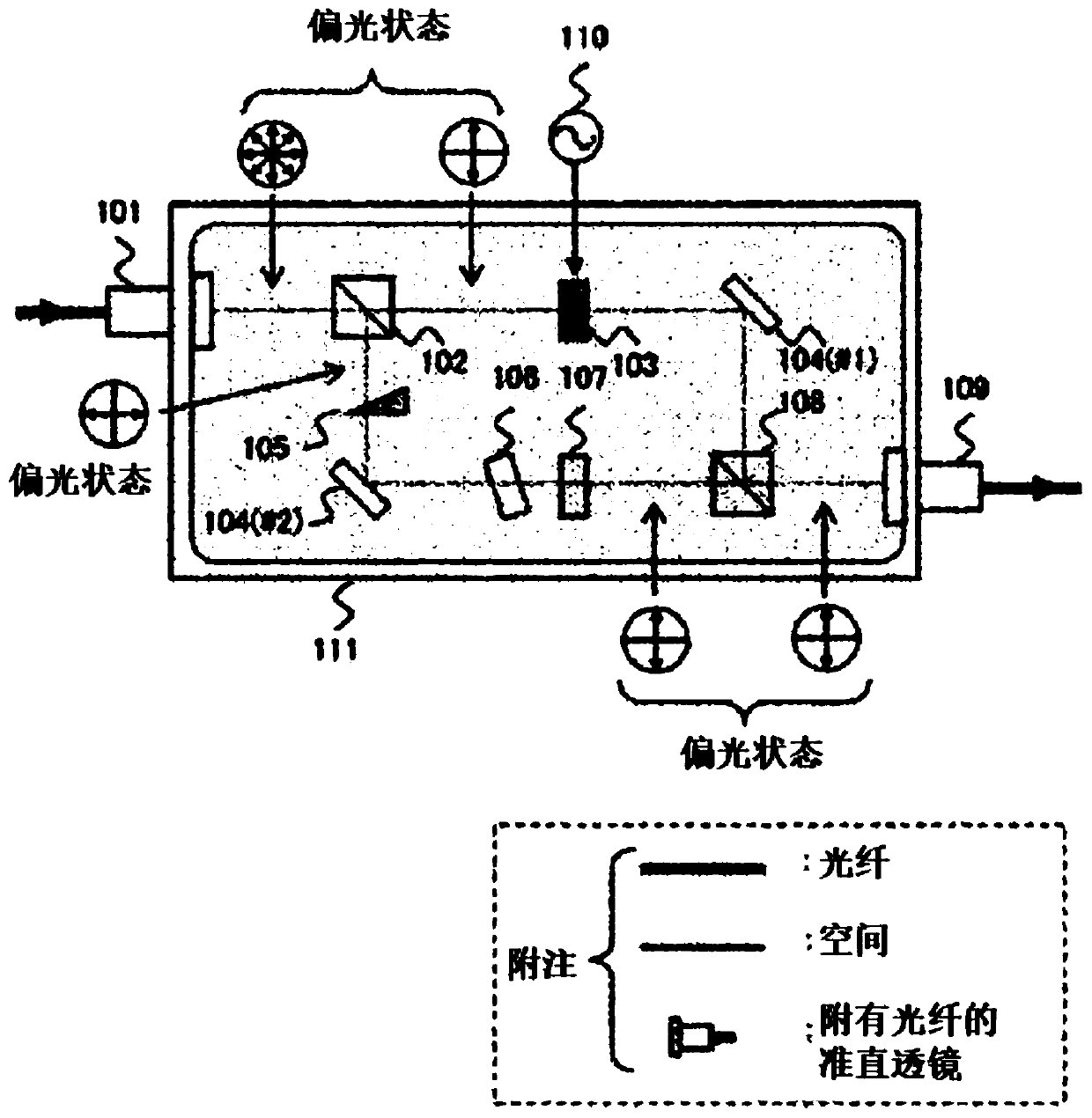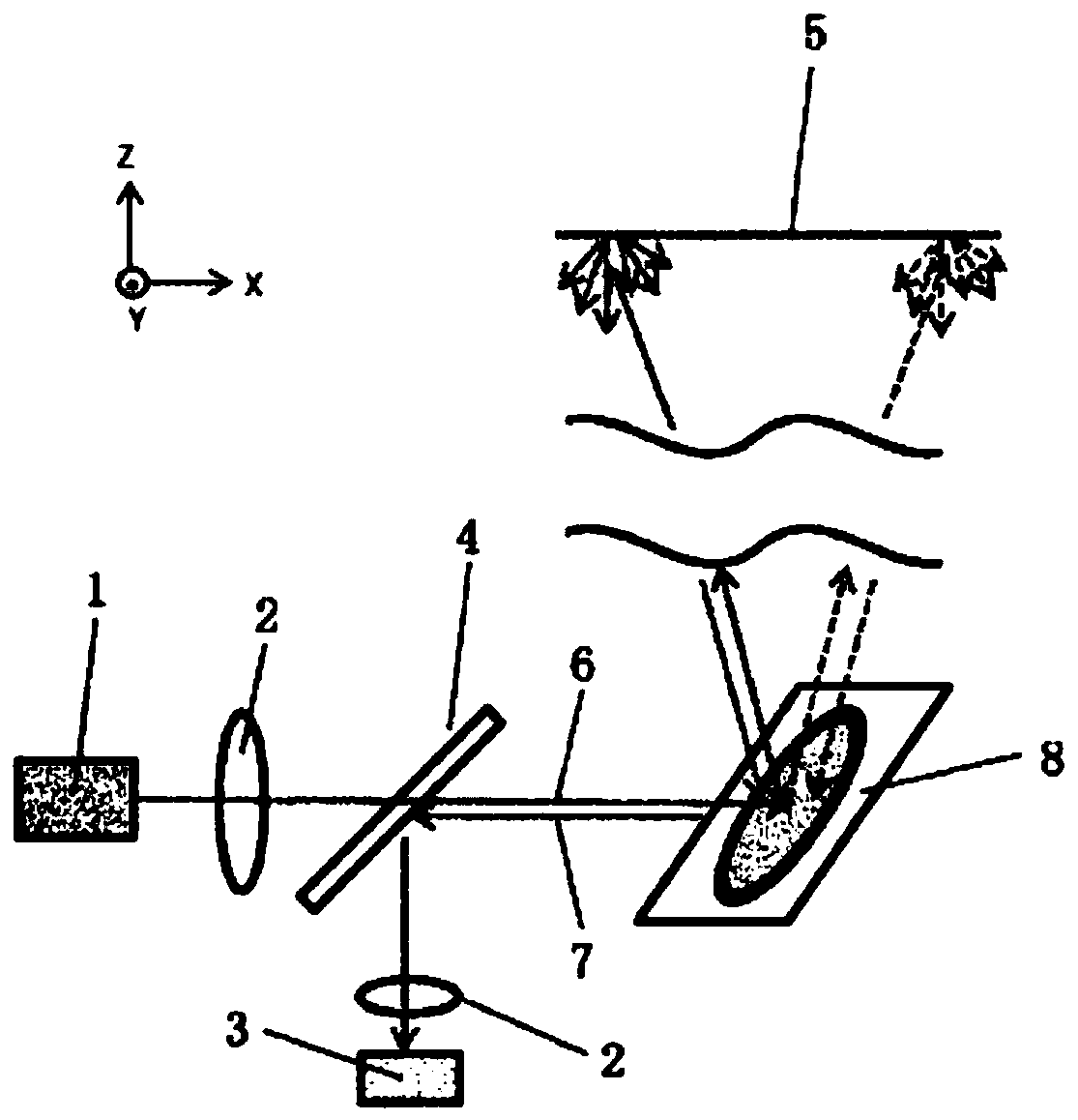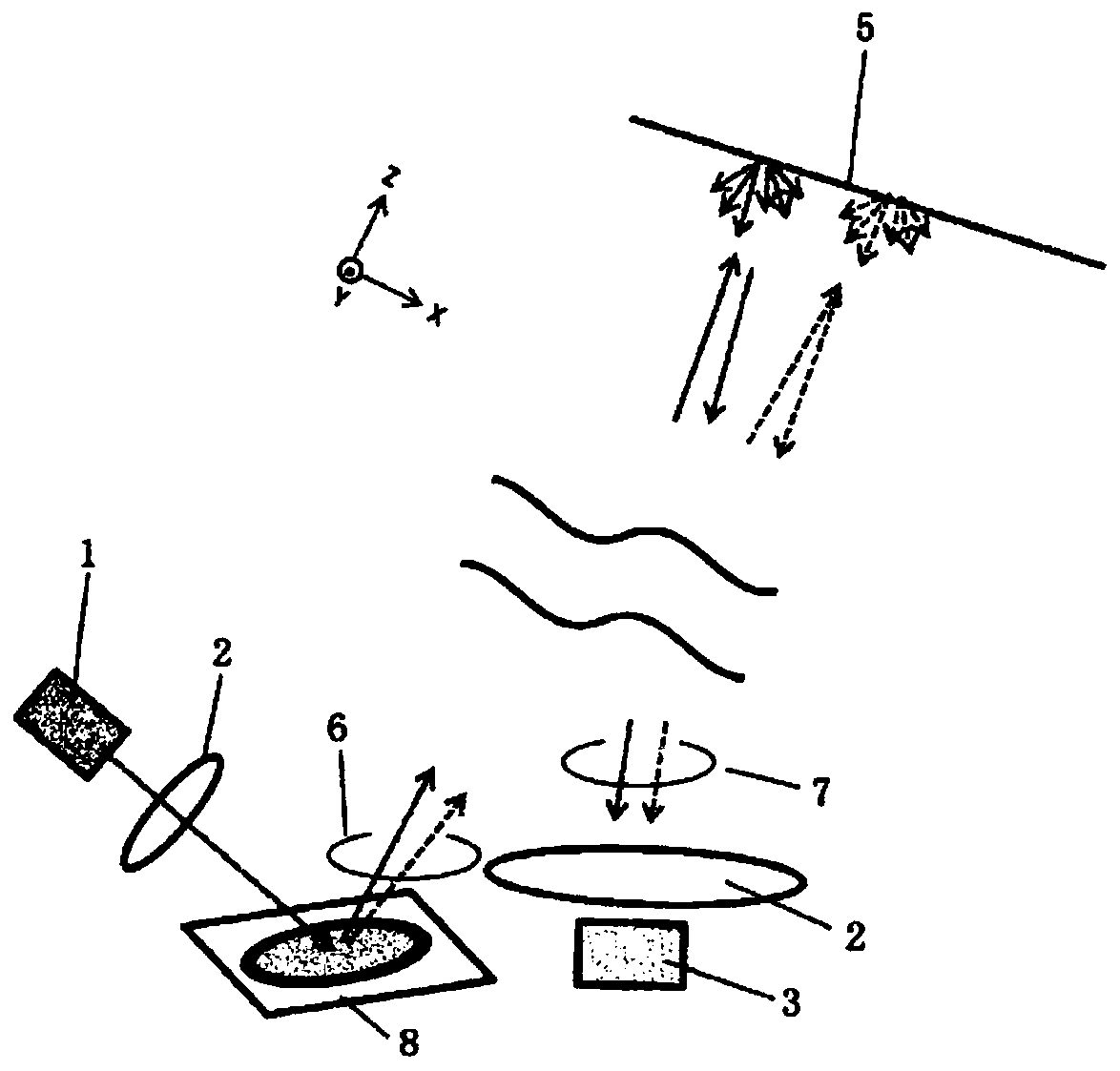Circularl polarization-type polarization diversity element, scanning element using same, and lidar
A technology of polarization diversity and laser radar, which is applied in polarizing elements, optical elements, optics, etc., can solve problems such as inability to scan at high speeds, and achieve excellent mass production and reduce the effect of temperature
- Summary
- Abstract
- Description
- Claims
- Application Information
AI Technical Summary
Problems solved by technology
Method used
Image
Examples
Embodiment 1
[0072] Figure 7 An example of the circular polarization type polarization diversity element 71 of the present invention is shown. The light beam 32 emitted from the single-mode fiber 31 is collimated using the lens 2. The polarization state can be decomposed into right-handed circularly polarized light (corresponding to m=+1: solid line) and left-handed circularly polarized light (corresponding to m=-1: dashed line). If the light beam 32 then enters the polarization grating 92, the right-handed circularly polarized light becomes upward (deflection), and the left-handed circularly polarized light becomes downward (deflection), which are respectively converted into reversely rotated circularly polarized light.
[0073] Figure 8 The structure and function of the polarization grating 92 are shown. The polarization grating 92 is made of, for example, a liquid crystal polymer or the like, and its guide rotates along the rotation axis A at a specific period Λ. The thickness is set s...
Embodiment 2
[0086] Figure 9A~Figure 9C An example of a beam digital scanning element using the circular polarization type polarization diversity element 71 is shown. Figure 9A Represents the beam digital scanning element, Figure 9B Represents the basic unit. In addition, Figure 9C This is an enlarged view showing the structure of the part surrounded by the one-point chain line A of the polarization turning element 91. Figure 9A The beam digital scanning element 90 shown is Figure 9B The illustrated basic unit 94 is formed by connecting a plurality of stages with a required number of groups, and a circular polarization type polarization diversity element 71 and a lens 2 are arranged.
[0087] As for Figure 9B and Figure 9C As explained, the basic unit 94 is formed by sandwiching the polarization turning element 91 in a point symmetrical manner by a wedge 93 composed of two high refractive index materials. The polarization turning element 91 is formed by forming a transparent glass subst...
Embodiment 3
[0101] Picture 11 To show an example of a lidar capable of performing the above-mentioned scanning. The composition of this lidar is similar to the above figure 2 The same coaxial system uses a transmissive beam digital scanning element 90 in the steering element instead of the reflective microelectromechanical mirror 8.
[0102] On the other hand, as a modulation method of lidar, there are various reports. In this embodiment, the Time of Flight (ToF) method is used as the modulation method. This method measures the time difference T from the transmission of the light pulse 9 (reception of the transmitted light pulse 9 by the light receiving element 3) to the reception of the light pulse 10 (reception by the light receiving element 3), according to d=cT / 2 (here , C is the speed of light) to measure the distance d to the object 5. Among them, T is appropriately corrected by the optical path length formed by the lidar.
[0103] In order to improve the distance accuracy, electron...
PUM
 Login to view more
Login to view more Abstract
Description
Claims
Application Information
 Login to view more
Login to view more - R&D Engineer
- R&D Manager
- IP Professional
- Industry Leading Data Capabilities
- Powerful AI technology
- Patent DNA Extraction
Browse by: Latest US Patents, China's latest patents, Technical Efficacy Thesaurus, Application Domain, Technology Topic.
© 2024 PatSnap. All rights reserved.Legal|Privacy policy|Modern Slavery Act Transparency Statement|Sitemap



